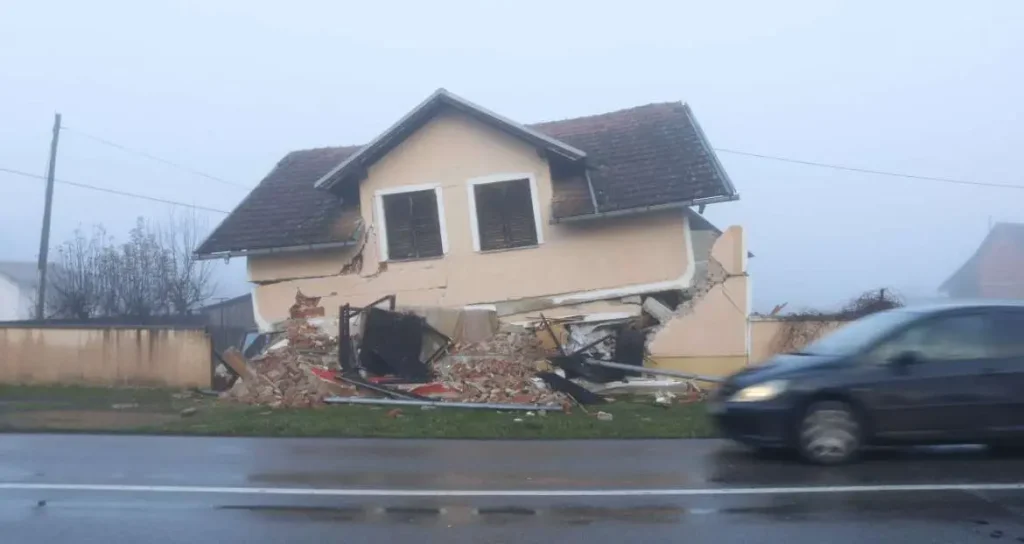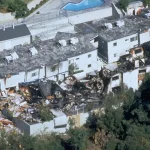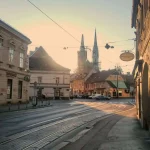After the initial emotions of the earthquake, the harsh realities of life that will follow, and how it will be changed for many.
After seeing hundreds of articles in the Croatian media in the aftermath of the earthquake, all focus on the devastation and human interest stories, one story in 24Sata caught my attention on an entirely different topic, one which we subsequently covered in Croatian Earthquake Aftershocks: A Home Destroyed, Loan Repayments Unaffected.
My first reaction was that the couple should have had house insurance, but I decided to read the article. And so began an introduction into an issue which is going to have a huge impact on the lives of many people affected by the disaster. I also learned a lot more about Croatian insurance than I thought I ever needed to know.
It turned out that the couple did have insurance. Indeed, they had to have insurance, a requirement from the bank which gave them a 30-year loan on their first home, an apartment in Sisak. They moved in on November 27, 2020, 32 days before disaster struck. Before they had made the first repayment to the bank, the apartment must now be demolished. But the bank repayments must continue.
This is obviously going to be far from an isolated case, and I posted on Facebook and LinkedIn to see what more information I could learn. It has been quite an education so far, and many thanks for all the contributions received. I learned a few things, such as 1964 being a pivotal date in earthquake insurance, with policies and payments changed in the aftermath of the 1963 major quake in Skopje, (now North) Macedonia.
I also learned that cover depends on the size of the quake for it to be designated as a quake. From one current policy in Croatia:
In terms of these Terms, an earthquake signifies a naturally induced ground motion (shaking) sudden geophysical processes in the Earth’s crust which manifested itself in the place of insurance with an intensity of 5 degrees and more per Mercalli-Cancani-Sieberg scale (MCS scale).
I also learned that the culture of insuring houses is not so strong in Croatia, with an estimated 30% of properties insured. While basic property insurance is mandatory for bank loans, earthquake insurance is an added extra, and not one that many take up. Indeed, there are an estimated 15% of properties with earthquake insurance.
Which means that there are 85% of properties which are not covered. The consequences of which can be felt in seconds with a major quake.
It was reported today that earthquake insurance premiums are to rise 28% in Croatia, understandably in the wake of recent events. The report also has some other numbers from the Chamber of Economy.
“The devastating earthquakes which hit Croatia last year have caused over HRK 100 billion worth of damage and many people have lost their properties.”
“After the March 2020 earthquake, insurance companies paid HRK 237.5 million and processed 7,269 damages claims by the end of November, the HGK said, adding that the Zagreb quake showed that an extremely low percentage of apartment buildings had earthquake insurance.”
Do the maths. Of course there will be additional payouts, particularly from the most recent quakes, but according to these official numbers from the Chamber of Economy, 100 billion kuna of damage and 237.5 million kuna of payout equates to 0.2375% of compensation.
There is a lot more to this, of course, and I am certainly no expert, but this is looking like a huge issue, one which TCN will be following. If anyone has insights or information to add, please send (with links to authoritative sites preferred) to [email protected] Subject Insurance.
Among the many responses I received to my social media plea, Ognjen Radulovic said that he would be happy to answer some questions in his capacity of Strategic Insurance Specialist at MAI Insurance and Reinsurance Brokers. Some of the answers are below, while Ognjen has agreed to get more data for other questions.
1. What is the general culture and attitude to home insurance in Croatia?
Home insurances have been increasing over the last decade, for sure due to bank loans as collaterals but also with a different scope of required coverages. Most commonly used are Fire, Lightning, Explosion, Aircraft fall (the so-called FLEXA group of perils).
2. Earthquake insurance is an additional extra, and I understand that 85% of properties are not covered by it. Can you explain a little about the earthquake cover and its costs?
After closing FLEXA, it is possible to proceed with the closing of extras such as EQ (earthquake insurance).
Unlike FLEXA and some other named perils, EQ is a 100% reinsured peril, which means that local markets are paying premiums to reinsurers in order to obtain the cover. It also means that local markets do not participate in the remuneration of losses, they only formalize the payout once the losses have been confirmed by reinsurers.
All relations among insurers and reinsurers are strictly regulated by supervisory bodies (HANFA in Croatia).
The costs (insurance premiums) may vary among markets. With the intention to reduce the insurance premium, markets are offering coverage closing with the insured’s self-retention clause based on the Sum Insured (contracted Property Value) or Loss Amount (depending on the market).
3. Several people who had earthquake cover in Zagreb in March found that they were unable to claim due to the small print. What were the main reasons for this?
Hard to answer without detailed insights. Most likely the coverage has been closed with deductible in % and stated absolute minimum of self-retention which is higher than the loss occurred.
4. How transparent is the insurance industry in your opinion, and what steps could be taken to improve the information flow and encourage more homeowners to insure their properties?
This is a subject of local insurance culture generally: for instance, Slovenia has double insurance premium per capita than Croatia, Serbia twice lower… A higher economic standard is mostly followed by a higher interest of homeowners for insurance – paradoxically, but true: the less money you have, the harder you decide to protect the property you own.
5. We are already hearing of several examples of apartment owners in the Petrinja area who were insured and had bank loans but no earthquake insurance. Some buildings have been earmarked for demolition, thereby leaving people without homes but still with the bank loans to pay. In your experience, what happens in situations like these?
Banks do not require EQ coverage, but it was not the obstacle for the owners to arrange the closure of this specific peril in addition – an example of owners’ bad risk management and lack of insurance culture. They got the loan, the properties don’t exist anymore, they have to return the loans as agreed.
Best case scenario: the state will provide some help, but for sure not equal to the losses they suffered.
For more on the Petrinja earthquake and to see how you can donate money, food, humanitarian, sanitary, and material aid, follow our dedicated section.











